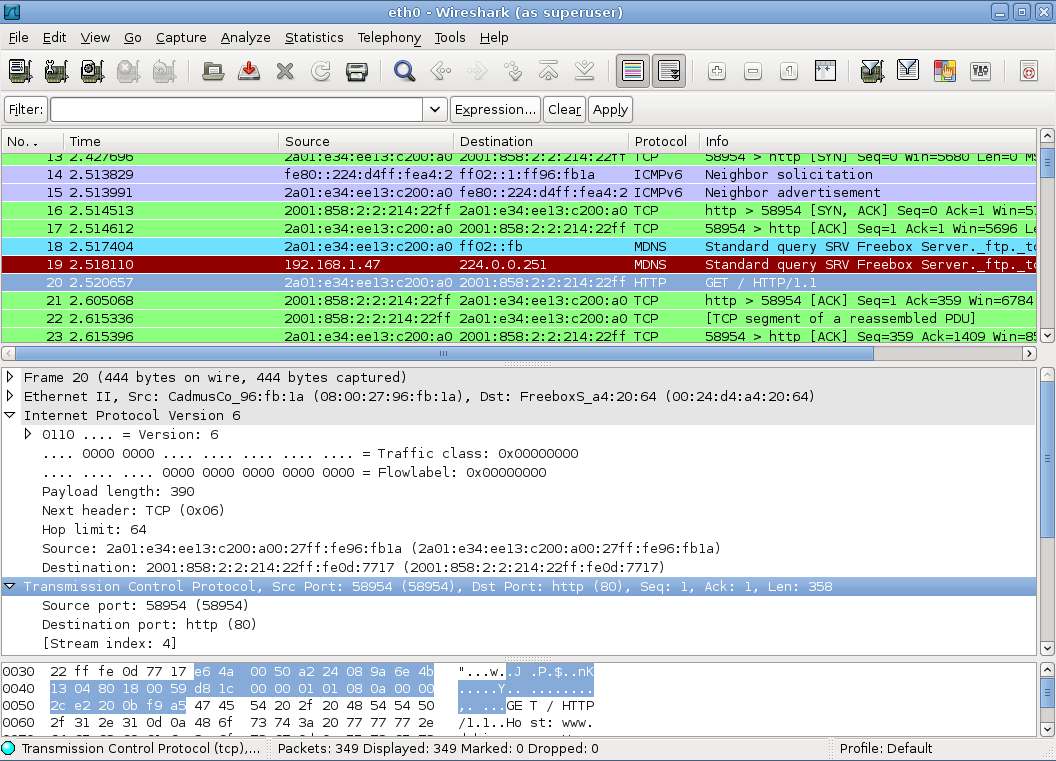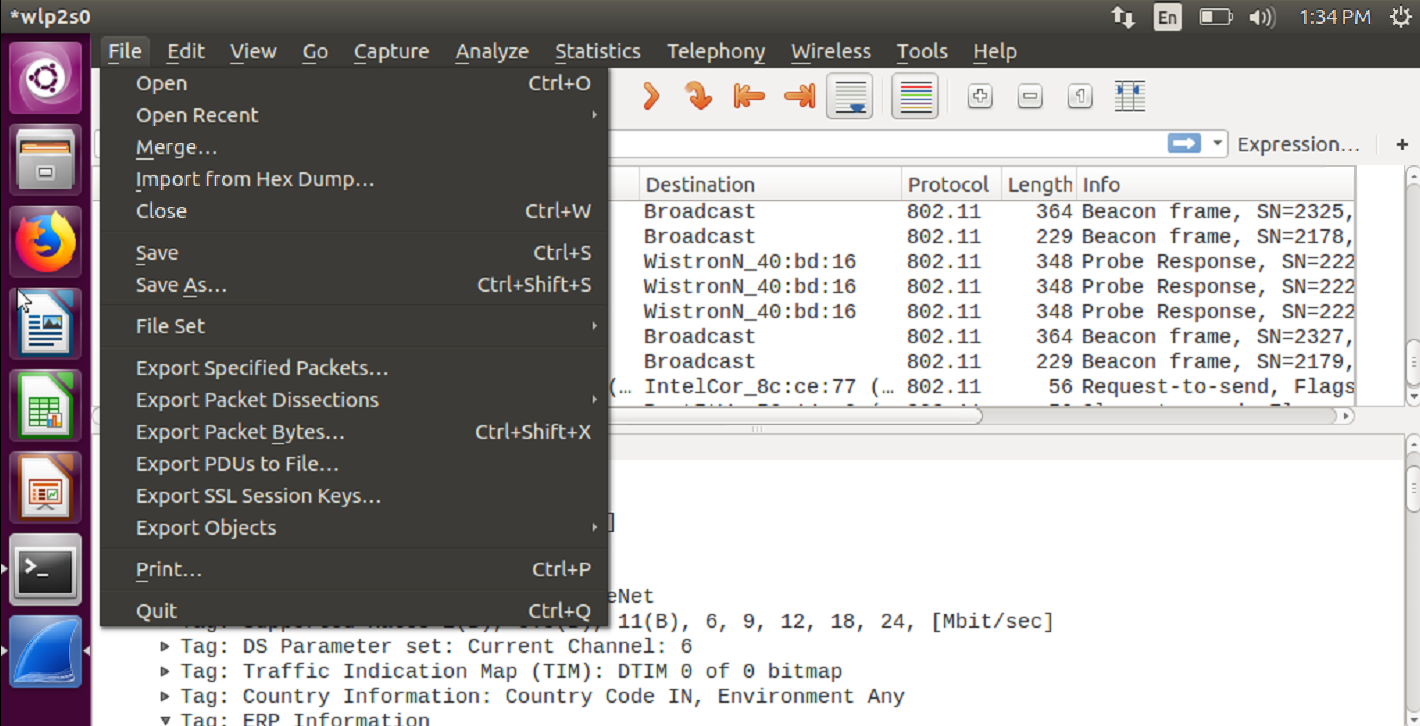

- Using wireshark to capture network traffic how to#
- Using wireshark to capture network traffic software#
- Using wireshark to capture network traffic Pc#
- Using wireshark to capture network traffic mac#
Stop capturing data by clicking the Stop Capture icon.
Using wireshark to capture network traffic how to#
Please see Appendix A: Allowing ICMP Traffic Through a Firewall for information on how to allow ICMP traffic through the firewall using Windows.ĭ.

Using wireshark to capture network traffic Pc#
Note: If the PC of your team member does not reply to your pings, this may be because the PC firewall of the team member is blocking these requests. Notice that you start seeing data appear in the top window of Wireshark again. Minimum = 0ms, Maximum = 0ms, Average = 0ms Packets: Sent = 4, Received = 4, Lost = 0 (0% loss),Īpproximate round trip times in milli-seconds: Navigate to a command prompt window and ping the IP address that you received from your team member. This filter causes all data in the top window to disappear, but you are still capturing the traffic on the interface. Type icmp in the Filter box at the top of Wireshark and press Enter, or click the Apply button (arrow sign) to view only ICMP (ping) PDUs.Ĭ. We can apply a filter to make it easier to view and work with the data that is being captured by Wireshark.įor this lab, we are only interested in displaying ICMP (ping) PDUs. This information can scroll by very quickly depending on what communication is taking place between your PC and the LAN. The data lines will appear in different colors based on protocol.

Information will start scrolling down the top section in Wireshark. Make sure the desired interface has traffic.ī. Double-click the desired interface to start the packet capture. Step 2: Start Wireshark and begin capturing data.Ī.
Using wireshark to capture network traffic mac#
Do not provide them with your MAC address at this time. Ask a team member or team members for their PC IP address and provide your PC IP address to them. : Intel(R) 82577LM Gigabit Network Connection In a command prompt window, enter ipconfig /all, to the IP address of your PC interface, its description, and its MAC (physical) address. Step 1: Retrieve your PC interface addresses.įor this lab, you will need to retrieve your PC IP address and its network interface card (NIC) physical address, also called the MAC address.Ī. This analysis should help to clarify how packet headers are used to transport data to their destination. You will also look inside the frames captured for specific information. In Part 1 of this lab, you will ping another PC on the LAN and capture ICMP requests and replies in Wireshark.

Instructions Part 1: Capture and Analyze Local ICMP Data in Wireshark If using a packet sniffer such as Wireshark is an issue, the instructor may wish to assign the lab as homework or perform a walk-through demonstration. It is recommended that permission be obtained before running Wireshark for this lab. Using a packet sniffer such as Wireshark may be considered a breach of the security policy of the school. Instructor Note: This lab assumes that the student is using a PC with internet access and can ping other PCs on the local area network.
Using wireshark to capture network traffic software#
Wireshark is a software protocol analyzer, or “packet sniffer” application, used for network troubleshooting, analysis, software and protocol development, and education.


 0 kommentar(er)
0 kommentar(er)
